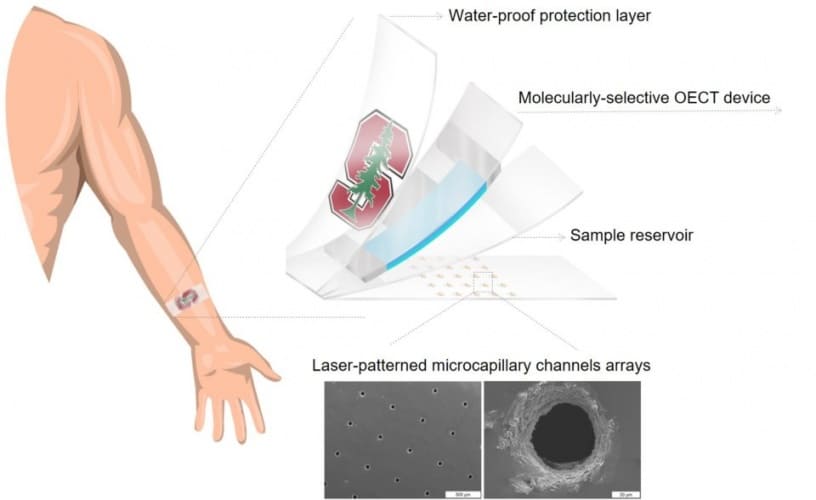A wearable device developed at Stanford University can detect stress levels by measuring the amount of cortisol in users’ sweat.

Cortisol is a hormone that spikes up and down throughout the day, often in relation to stress. According to the Stanford team, existing methods for measuring the hormone can take several days. This lag makes it difficult to accurately inform medical treatments, despite the fact cortisol levels can be an indicator of adrenal and pituitary gland function.
The prototype wearable, produced out of the lab of materials scientist Alberto Salleo, is a patch that wicks sweat from the skin. Post-doctoral scholar Onur Parlak built a stretchy, rectangular sensor around a membrane that specifically binds only to cortisol. Attached to the skin, it sucks in sweat passively through holes in the bottom of the patch. The sweat collects in a reservoir, which is topped by the cortisol-sensitive membrane. Charged ions like sodium or potassium, also found in sweat, pass through the membrane unless they are blocked by cortisol. It is those charged ions that the sensor detects, as cortisol itself has no charge, presenting a unique challenge.
“We are particularly interested in sweat sensing, because it offers noninvasive and continuous monitoring of various biomarkers for a range of physiological conditions,” said Parlak, lead author of the paper, which is published in Science Advances. “This offers a novel approach for the early detection of various diseases and evaluation of sports performance.”
Parlak first showed that the device measured up to the gold standard clinical test in the lab. He then tested it in the real world when he and two volunteers ran for 20 minutes with the patches on their arms. In both the lab and real world tests, the results were similar to the gold standard. Readings are taken by connecting the patch to an external device, but there are plans for a fully integrated version of the patch to be developed. It is hoped that the patch could be used to detect stress levels in children who may not be able to communicate and in non-verbal patients.




Nanogenerator consumes CO2 to generate electricity
Whoopee, they've solved how to keep a light on but not a lot else.